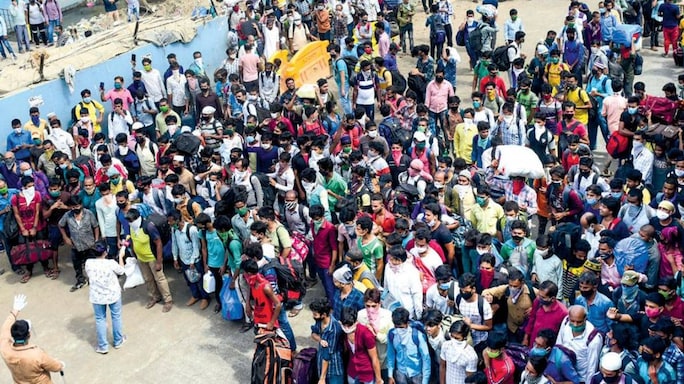We Threw Our Workers Under The Bus
The injustice against our migrant workforce will linger in our collective conscience
 Photo: Shutterstock
Photo: Shutterstock
There was blood on the tracks—a few rotis and personal belongings strewn around. Sixteen migrant labourers were sleeping on the rails, exhausted from walking for hours on their journey home in the gruelling heat, assuming trains were not running. They were run over by a freight train on 8 May near Maharashtra’s Aurangabad. Then there was the child trying to wake his mother, lying dead on Muzaffarpur railway station, on 25 May. She had reportedly died from extreme heat, exhaustion and lack of food and water.
These searing images will linger in our collective memory in a way that no statistical analysis or reportage can. While the COVID-19 toll has crossed 24,000, the reported deaths due to the lockdown—caused by accidents, starvation or financial distress and intolerable hardship—approaches the 1,000 mark (according to a public database).
At a time when the entire country was at a standstill, our migrants had to do the moving—not in hope but in desperation. A survey of 5,000 self-employed, casual and regular wage workers across 12 Indian states, conducted between 13 April and 23 May by researchers of the Azim Premji University, found that two-thirds of those surveyed lost work, and those who didn’t had their earnings drop by more than half. Nearly 80 per cent of them were eating less food than before.
Also, nearly two-thirds of the respondents in urban areas did not receive any of the cash transfers announced by central and state governments. No wonder the migrant workers decided to head home. They grabbed a few personal items and some dry food for the journey—rotis and biscuits (the only industry where sales peaked during April and May). Ironically, the government’s economic package, that did very little for them but was grandiosely called Atmanirbhar Bharat Abhiyan, provided the perfect title for their odyssey.
Migration is all about mobility, and yet, when they desperately needed to move, our migrant workers were left stranded, without access to transportation. And, some of them didn’t make it. Such as those 16 who were run down by a speeding train—a symbol of movement and progress and ‘India shining’—like a ritual sacrifice.
At the heart of migration is the decision of people to move from villages and towns in search of work and a better life, in order to support their families back home. In the dry language of economics, economic activity occurs when factors of production—land, labour and capital—combine to produce goods and services. But it is labour that does most of the physical moving—from sectors where productivity is low, such as agriculture, to those where it is higher, such as manufacturing and services, in urban or semi-urban areas.
Of our total workforce estimated at about 500 million, a whopping three-quarters are self-employed or casual labourers, with no security of income or employment and no benefits such as paid leave, health care or social security that are a given in ‘proper’ jobs. The number of casual workers in urban areas is around 19 million, according to government labour-force studies. Conservative estimates place the number of migrant workers who were part of the first wave of reverse migration from cities during lockdown at 5 to 10 million.
Perhaps the human tragedy involved here and its scale will not move everyone equally. But the engine of the economy runs on the fuel of migrant labour and cannot be switched on and off at will. Migrants will make a choice once again when things normalize a bit. The scarring experience during the lockdown may mean that they will not be in any rush to return to the cities that threw them under the bus at a time when they were most vulnerable. It will take time for the bloodstains on the tracks to be washed away.
Maitreesh Ghatak is professor of economics at the London School of Economics and an elected Fellow of the British Academy.






